Black Sea Fleet during the First World War
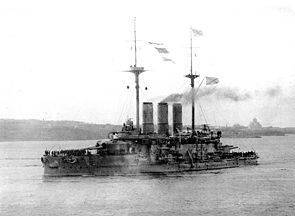 In the First World War (1914-1918), the adversary of the Russian Empire on the Black Sea was the German-Turkish fleet. And although the Young Turkish government had long doubted with whom to fight, and with whom to be friends and maintained neutrality. The Russian Ministry of Foreign Affairs (MFA) and intelligence closely watched domestic political events in Turkey: Minister of War Enver Pasha and Minister of the Interior Talaat Pasha advocated an alliance with the German Empire, and the Minister of Marine, the head of the Istanbul garrison, Jemal Pasha, for cooperation with France. They informed the commander of the Black Sea fleet A. A. Ebergard about the state of the Turkish fleet and army, their preparations, so that he can correctly respond to the actions of a potential enemy.
In the First World War (1914-1918), the adversary of the Russian Empire on the Black Sea was the German-Turkish fleet. And although the Young Turkish government had long doubted with whom to fight, and with whom to be friends and maintained neutrality. The Russian Ministry of Foreign Affairs (MFA) and intelligence closely watched domestic political events in Turkey: Minister of War Enver Pasha and Minister of the Interior Talaat Pasha advocated an alliance with the German Empire, and the Minister of Marine, the head of the Istanbul garrison, Jemal Pasha, for cooperation with France. They informed the commander of the Black Sea fleet A. A. Ebergard about the state of the Turkish fleet and army, their preparations, so that he can correctly respond to the actions of a potential enemy.With the beginning of the war (1 August 1914, Germany declared war on Russia), the government instructed Admiral A. A. Eberhard to avoid aggressive actions that could trigger a war with the Ottoman Empire, reinforcing the arguments of the Turkish "war party". The Black Sea Fleet had the right to start hostilities only by order of the Supreme Commander (he was Grand Duke Nikolai Nikolayevich (junior) from July 20 1914 to August 23 1915), or according to the Russian Ambassador in Istanbul. Although the Russian-Japanese war (1904-1905) showed the erroneousness of such a position, when the Japanese fleet suddenly attacked the Russian Port Arthur squadron and temporarily paralyzed its activities, which allowed the Japanese to conduct a free landing of land armies. The imperial government, after 10 years "came on the same rake," the fleet commander was bound by government directives, the instructions of the higher military command and could not implement all measures to increase the combat readiness of the fleet, including the possibility of a preventive strike. As a result, the Black Sea Fleet, although it was significantly stronger than the Turkish naval forces, was forced to passively wait for the attack of the enemy.
The ratio of forces: the Russian Black Sea Fleet and the German-Turkish fleet
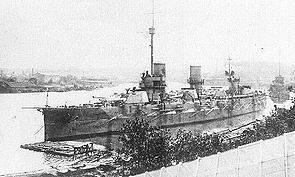 Before the war, the Black Sea Fleet, in all respects, had complete superiority over the enemy: in terms of the number of pennants, in firepower, in combat training, in the training of officers and sailors. It consisted of: old-style battleships 6 (so-called battleships, or dodrednouta) - the flagship of the fleet "Evstafy", "John Chrysostom" (1904-1911 built), Panteleimon (the former notorious "Prince Potemkin -Tavrichesky, 1898-1905 (built), Rostislav (1894-1900, built), Three Saints (built in 1891-1895), Sinop (1883-1889, built); 2 Bogatyr type cruisers, 17 destroyers, 12 destroyers, 4 submarines. The main base was Sevastopol, the fleet had its own shipyards in Sevastopol and Nikolaev. 4 of powerful modern linear ships (dreadnoughts) were built: “Empress Maria” (1911-July 1915), “Empress Catherine the Great” (1911-October 1915), “Emperor Alexander III” (1911-June 1917 g .), “Emperor Nicholas I” (from 1914, incomplete due to a sharp deterioration in the political and financial-economic situation after the February revolution of 1917). Also during the war, the Black Sea Fleet received - 9 destroyers, 2 air transport (aircraft carrier types), 10 submarines.
Before the war, the Black Sea Fleet, in all respects, had complete superiority over the enemy: in terms of the number of pennants, in firepower, in combat training, in the training of officers and sailors. It consisted of: old-style battleships 6 (so-called battleships, or dodrednouta) - the flagship of the fleet "Evstafy", "John Chrysostom" (1904-1911 built), Panteleimon (the former notorious "Prince Potemkin -Tavrichesky, 1898-1905 (built), Rostislav (1894-1900, built), Three Saints (built in 1891-1895), Sinop (1883-1889, built); 2 Bogatyr type cruisers, 17 destroyers, 12 destroyers, 4 submarines. The main base was Sevastopol, the fleet had its own shipyards in Sevastopol and Nikolaev. 4 of powerful modern linear ships (dreadnoughts) were built: “Empress Maria” (1911-July 1915), “Empress Catherine the Great” (1911-October 1915), “Emperor Alexander III” (1911-June 1917 g .), “Emperor Nicholas I” (from 1914, incomplete due to a sharp deterioration in the political and financial-economic situation after the February revolution of 1917). Also during the war, the Black Sea Fleet received - 9 destroyers, 2 air transport (aircraft carrier types), 10 submarines. At the beginning of 1914, the withdrawal of the Turkish fleet from the Bosphorus Strait to the battle with the Russian fleet seemed fantastic. The Ottoman Empire had been in decline for almost two centuries, and by the 20 century, decomposition processes had only intensified. Turkey lost three wars to Russia in the 19th century (1806-1812, 1828-1829, 1877-1878), was the winner in the Crimean War (1853-1856), but only through an alliance with England and France ; Already in the 20th century, Italy was crushed in the war for Tripolitania (1911-1912), and in the Balkan war (1912-1913). Russia was among the top five world leaders (Great Britain, Germany, USA, France, Russia). By the beginning of the century, the Turkish naval forces were a pitiful sight — a collection of morally and technically outdated ships. One of the main reasons for this is Turkey’s complete bankruptcy; there was no money in the treasury. The Turks had only a few more or less combat-ready ships: the 2 armored cruisers “Medgidiye” (built in the USA 1903) and the “Hamidiye” (England 1904), 2 squadrons of the battleship “Torgut Reis” and “Hayreddin Barbarossa” (armored ships of type "Brandenburg", bought in Germany in 1910), 4 built in France destroyer squadrons (1907 of "Durendal" type), 4 destroyer of German construction (purchased in Germany in 1910, type "S 165"). A distinctive feature of the Turkish naval forces was the almost complete lack of combat training.
This is not to say that the Turkish government did not try to change the situation in its favor: this was how an ambitious fleet renewal program was adopted in 1908, it was decided to purchase the latest model 6 battleships, 12 destroyers, 12 submarines and a number of auxiliary vessels. But the war with Italy, the two Balkan wars devastated the treasury, orders were thwarted. Turkey ordered more ships in France and England (which is interesting - Russia's allies on the Entente, but built ships for Turkey, a potential enemy of Russia on the Black Sea), as the battleship, 6 destroyer and 4 submarines were built in England. This replenishment could seriously change the balance of power in favor of the Ottoman Empire, but as soon as the war began, England confiscated the ships in favor of its fleet. Only the arrival of 2 August 10 from the Mediterranean Sea of two newest German cruisers: heavy “Geben” (called “Sultan Selim”) and light “Breslau” (“Midilli”), they became part of the Turkish fleet together with crews, allowed Turkey to lead fighting in the Black Sea basin. The commander of the German Mediterranean Division, Rear Admiral V. Souchon, led the combined German-Turkish forces. The Goeben was more powerful than any old Russian battleship, but together the Russian battleships would have destroyed it, so when confronted with the entire squadron, the Goeben would leave, using their high speed.
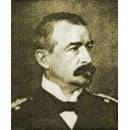 Reference: Souchon Wilhelm (1864-1946)He headed the German-Turkish fleet in 1914-1917. In 17 years he became an officer, served on various ships, commanded the gun Adler, took part in the annexation of the Samoan Islands by Germany, commander of the battleship Vettin, head of the German Baltic Fleet, from 1911, the rear admiral, from October 1913, commander of the Mediterranean division . With the beginning of the war he was able to make a breakthrough in the Dardanelles, with the complete superiority of the English fleet, before that fired on the French ports in North Africa, delaying the arrival of the expeditionary force for three days, which was important when the German armies arrived in Paris. By his actions (“Sevastopol wake-up”) he dragged the Ottoman Empire into a war. Quite successfully, he acted against the superior forces of the Entente, he forged the Russian Black Sea Fleet with his actions, in September 1917 was transferred to the Baltic, headed the 4 squadron of the fleet. He took part in the seizure of the Gulf of Riga and Moonsund archipelago. In March, 1919 retired, did not return to service, calmly lived his days, seeing the revival and repeated destruction of the German fleet.
Reference: Souchon Wilhelm (1864-1946)He headed the German-Turkish fleet in 1914-1917. In 17 years he became an officer, served on various ships, commanded the gun Adler, took part in the annexation of the Samoan Islands by Germany, commander of the battleship Vettin, head of the German Baltic Fleet, from 1911, the rear admiral, from October 1913, commander of the Mediterranean division . With the beginning of the war he was able to make a breakthrough in the Dardanelles, with the complete superiority of the English fleet, before that fired on the French ports in North Africa, delaying the arrival of the expeditionary force for three days, which was important when the German armies arrived in Paris. By his actions (“Sevastopol wake-up”) he dragged the Ottoman Empire into a war. Quite successfully, he acted against the superior forces of the Entente, he forged the Russian Black Sea Fleet with his actions, in September 1917 was transferred to the Baltic, headed the 4 squadron of the fleet. He took part in the seizure of the Gulf of Riga and Moonsund archipelago. In March, 1919 retired, did not return to service, calmly lived his days, seeing the revival and repeated destruction of the German fleet.Party plans
The main objective of the Black Sea Fleet was complete domination of the Black Sea, in order to reliably protect strategically important objects by the sea, cover the flank of the Caucasian army, and ensure the transfer of troops and supplies by sea. At the same time disrupt the shipping of Turkey along its Black Sea coast. When the Turkish fleet appeared in Sevastopol, the Russian fleet was to destroy it. In addition, if necessary, the Black Sea Fleet was preparing to conduct a Bosporus operation - to capture the Bosphorus Strait, by the forces of the Black Sea Fleet and airborne units. But the appearance of Turkish cruisers in Turkey, the plans of the Russian command were confused, Admiral Souchon was not going to engage in battle with the main forces of the Russian fleet, and using his speed he delivered pinpoint strikes and left before the main forces of the Black Sea Fleet approached.
In the 1915 year, when the newest battleships of the "Empress Maria" type entered the fleet, the fleet was given the task to disrupt the supply of coal and other supplies to the Bosphorus area and assist the troops of the Caucasian Front. To this end, 3 ship groups were created, each of which was more powerful than the German cruiser “Goeben”. They had to, changing each other, constantly be at the Turkish coast and thus perform the main task of the fleet.
The strategic intention of the commander of the united German-Turkish fleet, Rear Admiral Souchon, was to deliver a surprise attack almost simultaneously on the main base of the Russian fleet, Sevastopol, the ports of Odessa, Feodosia and Novorossiysk. To sink or seriously damage the warships and merchant ships that were there, as well as the most significant military and industrial facilities on the coast and, thereby weakening the Russian Black Sea Fleet, to achieve the possibility of full supremacy at sea. Thus, the German admiral planned to repeat the experience of the Japanese in 1904 year. But despite the success of the operation, the Russian fleet did not suffer serious losses, Sushon simply did not have enough firepower. Whether the fleet was more powerful than the Turks, the Black Sea Fleet could receive a heavy blow, which dramatically worsened the situation of the Russian Caucasian Army and disrupted the Black Sea communications.
The beginning of hostilities: "Sevastopol wake-up"
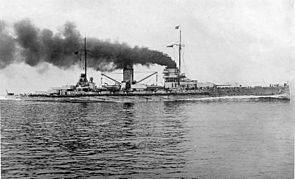 Vice-Admiral A.A. Ebergard received news of the German-Turkish squadron leaving the Bosphorus on October 10 for 27, he brought the Black Sea Fleet into the sea, waited all day for approaches to Sevastopol in the hope of meeting the enemy. But 28-th fleet headquarters received orders from the High Command "not to seek a meeting with the Turkish fleet and to engage with him in the event of an emergency." The Black Sea Fleet returned to the base and no longer took active steps. Admiral A. A. Ebergard, although he acted on orders from above, but this does not relieve him of his guilt for passivity, I think Admiral S. O. Makarov would not take into account the ranks if it was about the honor of the Russian fleet.
Vice-Admiral A.A. Ebergard received news of the German-Turkish squadron leaving the Bosphorus on October 10 for 27, he brought the Black Sea Fleet into the sea, waited all day for approaches to Sevastopol in the hope of meeting the enemy. But 28-th fleet headquarters received orders from the High Command "not to seek a meeting with the Turkish fleet and to engage with him in the event of an emergency." The Black Sea Fleet returned to the base and no longer took active steps. Admiral A. A. Ebergard, although he acted on orders from above, but this does not relieve him of his guilt for passivity, I think Admiral S. O. Makarov would not take into account the ranks if it was about the honor of the Russian fleet. Of course, the fleet command took action to prevent a sudden strike by the Turkish fleet. Conducted reconnaissance, on the approaches to Sevastopol in the patrol were three destroyers (who missed the German cruiser), the main forces of the fleet were at the base in full readiness. But all this was not enough. The command did not make any orders to prepare the fleet forces, including the Sevastopol fortress, to repel the attack of the enemy. The head of the raids' security wanted to turn on the minefield, but A.A. Ebergard forbade it, since he expected the Prut minzag approach. But the head of the raid still warned the commander of the artillery of the fortress about the possible arrival of the enemy squadron. And the coastal artillery more or less completed its task.
As a result, the Black Sea Fleet did not fulfill its main task - could not protect the Russian coast, missed the enemy fleet, which calmly went to the Bosphorus. 29-30 of October the German-Turkish fleet delivered an artillery strike on Sevastopol, Odessa, Feodosiya, Novorossiysk. This event received the name - "Sevastopol wake-up." In Odessa, the destroyers “Muawenet-i Millet” and “Gayret-i-Vataniye” drowned the Donets cannon, fired at the city and the port. The cruiser "Goeben" approached Sevastopol and within 15 minutes walked freely through our minefield, without opposition, firing at the city, the port and the ships that were on the outer roadstead. The electric circuit of the minefield was turned off, and without an order, no one turned it on. Konstantinovskaya battery was silent, waiting for the German cruiser to enter the targeted square, but opening fire, immediately hit the target three times. "Goeben" immediately gave full speed and retreated into the sea. On the way back, he met the mine-explorer Prut, who was waiting with a full load of mines in Sevastopol. Trying to save the Prut, three old destroyers on patrol (Lieutenant Pushchin, Hot and Resilient) launched an attack on the Geben. They did not have a single chance of success, but “Goeben” could not drown them, “they separated in peace”. Gunners "Goeben" easily repulsed this attack. The commander of the mine layer captain 2, rank G. A. Bykov, flooded the ship, which is interesting. “Goeben” was firing at it - 1 hour, 5 minutes, on a practically unarmed ship. But it was a success, because the Prut carried most of the naval mines. The cruiser “Breslau” laid mines in the Kerch Strait, on which the steamers “Yalta” and “Kazbek” exploded and sank. This is the great fault of the commander and his staff, especially the High Commander, who, with his instructions, tied the initiative of A. A. Aberhard. But in the end, the German-Turkish plan did not work anyway: the forces of the first blow were too scattered, and there was not enough firepower.
So Turkey entered the First World War and the last war with Russia. On the same day, the Russian ships began campaigns to the shores of the enemy. The fire of the cruiser Kagul destroyed the huge coal storages in Zonguldak, and the battleship Panteleimon and the destroyers sank three loaded troop vehicles. The Turks were amazed by such activity of the Russian fleet, they miscalculated themselves, imagining that they had gained time, the Black Sea Fleet was alive and acted.
- Alexander Samsonov
- http://topwar.ru"rel =" nofollow ">http://topwar.ru
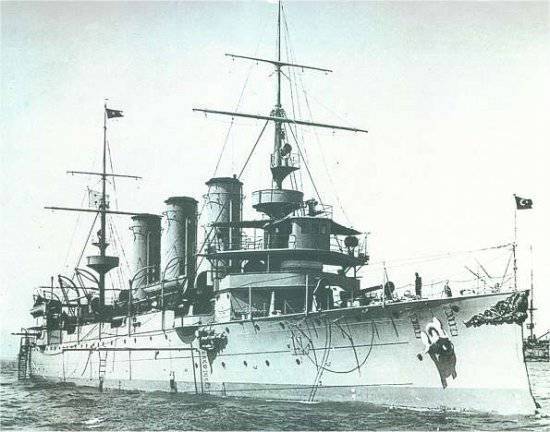
Information